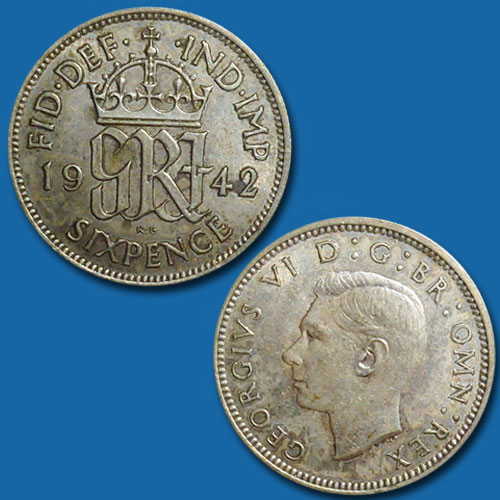Sixpence of Great Britain
2018-01-01 Mon
The sixpence was first struck during the reign of King Edward VI in 1551 CE. This denomination was popularly known as tanner or half-shilling and was worth 1/40th of a pound sterling before pre-decimal coinage.The last general issue of this denomination was minted in 1967 CE, it was obsolete by decimalisation in 1971 CE along with Shilling and florin. A special proof version was struck later to include in the farewell proof set of 1970 CE. It remained a legal-tender until 1980 CE due to the widespread public demand.
This denomination was minted during the reign of every British monarch. The silver content of this denomination was measured in sterling silver till 1920. Later on, about 50 percent of the silver content of these coins was reduced. The last 50-percent silver content coins were minted in 1946 CE. In 1947, this denomination was circulated in copper-nickel.
This fascinating denomination not only narrated the tale of British coinage but on its way it became a motivation for many traditions like children would eat their pudding to be lucky to find tanner in it on a Christmas day. It's a lucky charm for a bride, if she has ‘Something old, something new, something borrowed, something blue, and a sixpence for her shoe’.
To know more about sixpence click here.
Latest News
-
Mahatma
2024-04-25 ThuIndia Post issued a commemorative postage stamp on #LalaHansraj, also known as Mahatma Hansraj for�...
-
Berar Mint of Muhammad Akbar
2024-04-25 ThuBerar was a kingdom located in the Deccan region, with Elichpur as its capital. It was one of the Su...
-
Janma Kalnayak of Bhagwan Mahavir
2024-04-24 WedOn 21st April 2024 which was the 2550th Janma Kalnyanak of Bhagwan Mahavir Swami, PM Modi unveile...
-
Gold Pagoda of Vijaynagar Empire King Deva Raya I
2024-04-10 WedKing Deva Raya I of the Vijayanagara Empire was a patron of Kannada literature and architecture. He ...
-
Silver Denarius of Septimus Severus
2024-04-05 FriLucius Septimius Severus served as the Roman emperor from 193 to 211 AD. Severus sat on the throne o...

